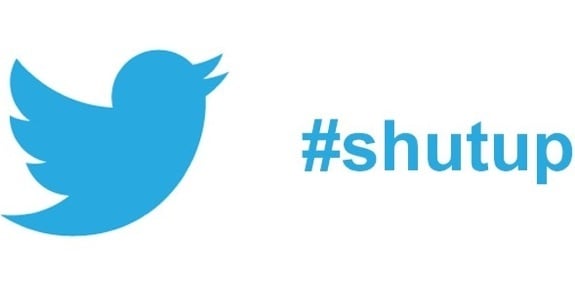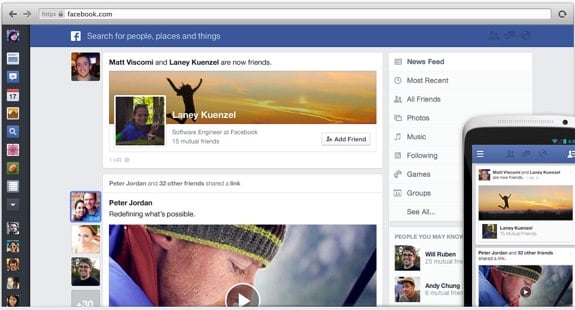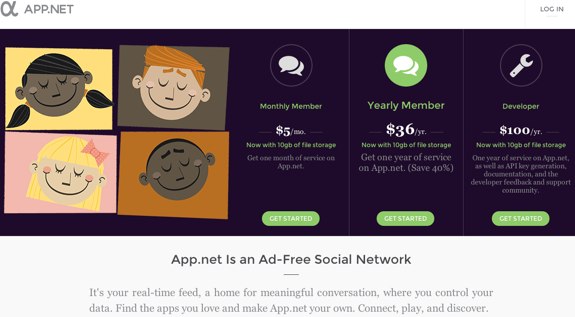Latest Gear Live Videos
Tumblr user numbers in massive freefall

Posted by Ariel Levin-Waldman Categories: News, Social Media, Social Networks,

Over a year ago, Yahoo purchased the blog host Tumblr for $1.1 billion. Today their investment is not looking so good. Rather than seeing growth, in the past six months Tumblr had lost over 7 million users.
Back in December, Tumblr boasted 49 million regular users. As of yesterday, consumer reports showed only 42 million. That's a 15 percent drop in traffic, presenting a problem for Yahoo, which has been trying to attract advertisers for the blogging service in order to monetize it.
When Yahoo first made the purchase, they stated that they would not make changes, and true to their word, Tumblr has remained more or less the same as it has been for years. No overhead policy change can really explain the loss of users (and consequently revenue.)
Click to continue reading Tumblr user numbers in massive freefall
Advertisement
Twitter finally allows you to mute your friends

Posted by Ariel Levin-Waldman Categories: Corporate News, Social Media, Social Networks,

It's pretty hard to get a message across in 140 characters or less. I know, I'm a journalist and I've had to do it professionally. But maybe you feel you are still getting too much information that you might not want. Maybe you just have a friend who has tweeted you to save the whales twenty times too many.
Well, now you can mute them.
Twitter has just unveiled its newest feature, the mute option. With the press of a button the you can select users in your feed that you just don't want to hear any more. You will no longer see their tweets, retweets, SMS or push notifications
It's not a full block feature. The biggest difference is that they can still follow you. They can still see your feed, share and retweet your posts and reply to you. You just won't see it in your timeline. They can also send you a direct tweet. The muted user does not receive any notification that you have shut them up.
You won't have to listen to them and they won't be upset with you. Now I can get back to seeing what trending without having to save any of those darned whales.
The Problem with Facebook [Video]

Posted by Andru Edwards Categories: Revenue, Social Media, Social Networks,
The problem is the only way Facebook has found to make money is by treating all entities on the site as advertisers and charging them to share their content.
This business plan backfires because 1) not all entities ARE advertisers and 2) it was the content from these people, specifically friends, family, and creators that made the site worth visiting in the first place.
Now the incentives are misaligned:
- Individuals want to see great content, but they are now seeing more paid content and organically shared content which appeals to the lowest common denominator (babies, weddings, and banal memes)
- Creators want to reach fans but their posts are being throttled to force them to pay to be seen
- Brands and advertisers have to pay once to advertise their page on Facebook, and then pay again to reach the people who have already liked their page. Plus Facebook is not a place where people generally go to buy things.
Facebook stands in contrast to other social media like Twitter, YouTube, and Instagram where all content is shared with all followers.
Facebook’s new News Feed focuses on multimedia [Video]

Posted by Andru Edwards Categories: Corporate News, Design, Social Media, Social Networks,

Facebook has announced a greatly revamped News Feed that hopes to beautify all the content that you consume on the social network. The new News Feed separates the different categories of content, making it easier to get to, say, just photo updates, or music updates, or groups, for example. Mark Zuckerberg says the new design is akin to a "personalized newspaper." The thought behind the changes are that people are sharing more and more multimedia--images, videos, links with previews…so why not take advantage of the screen space and optimize it?
Click to continue reading Facebook’s new News Feed focuses on multimedia [Video]
App.net introduces free accounts with an invitation system

Posted by Andru Edwards Categories: Revenue, Social Media, Social Networks, Startups,

App.net has decided to remove the cost of entry for some users, as it now allows those with paid accounts to invite up to three people to the service for free. If you're unfamiliar with App.net, it's a Twitter-like service that is free of advertising, instead allowing members to pay a $36 annual fee to be a part of it. Members own the data they put into it and don't need to give up any rights, and that includes the 10 GB cloud storage that tied to the App.net File API. Free users will have some limitation, though. For one, you'll only be able to follow a maximum of 40 other users, and instead of the aforementioned 10 GB of cloud storage, you get 500 MB instead. Lastly, paid accounts are allowed to upload files up to 100 MB in size, while free accounts have a 10 MB size restriction.
If you want to get in on App.net and don't feel like paying, hit up your paid user brethren and beg for an invite.
Read More  | App.net
| App.net
Facebook to reveal ads targeted to user behavior patterns

Posted by John Kilhefner Categories: Advertising, Corporate News, Social Media, Social Networks,

Facebook is now compliant with the Online Interest-Based Advertising Accountability Program, and has to show the AdChoice icon in behaviorally targeted Facebook Exchange (FBX) ads. This allows users to know when an ad is marketed to them on their browser behavior. The catch, however, is that the icon is only displayed when a user interacts with it by scrolling of the gray "X" over the ad.
Facebook will change the "Report this Ad" text with "Learn About Facebook Ads," and users can choose to opt out of specific ad networks. As Engadget notes, however, whether this legally complies with the Federal Commission guidelines for "clear and prominent notice" is unsure, as the ads only reveal itself as targeted once a user interacts with it.
AdChoice implementation will start at the end of March.
Read More  | ASRC Reviews via AdAge
| ASRC Reviews via AdAge
Twitter Partners with Nielsen to Create Nielsen Twitter TV Ratings

Posted by John Kilhefner Categories: Corporate News, News, Partnerships, Social Media,
Nielsen and Twitter are joining forces to create Nielsen Twitter TV Rating. Twitter, as we all know, is a social media platform that sees more than a billion tweets every 2.5 days on an inexhaustible list of topics. Nielsen specializes in information, particularly what consumers watch and buy. With Nielsen Twitter TV Rating, the two companies hope to find a standardized way of measuring the conversations happening around TV shows.
The ratings will be commercially available Fall 2013, and, according to Twitter's blog, will function as "one common benchmark from which to measure the engagement of their programming." The new rating system will set in place measures to quantify the people discussing the TV shows, as well as the people who were exposed to the conversation. The goal will be to provide "the precise size of the audience and effect of social TV to TV programming."
This is not the two companies first pairing, as both came together earlier this year to measure the impact of brand advertising campaigns using Twitter surveys.
Read More  | Twitter Blog
| Twitter Blog
Video: Google+ gets massive redesign

Posted by Andru Edwards Categories: Design, Social Media, Social Networks,
Google just released a massive redesign for its Google+ social network, the majority of which you can check out in the walkthrough video above. Our thoughts? Lots of whitespace, but we'll play with it for a bit before final judgment.
Facebook announces Timeline: Tell the story of your life

Posted by Andru Edwards Categories: Social Media, Social Networks,
This morning during the Facebook f8 keynote, Mark Zuckerberg introduced Timeline, a new way to express who you are on Facebook. It's a reverse chronological timeline of the most important pieces of content that you've shared on Facebook, which you have control over curating. Facebook apps will be able to add to your Timeline as well, and it's been built to look great on both desktops and mobile devices. Expect the feature to be rolled out sometime within the next few weeks, but you can get a peek at the goodness in the video above.
Read More  | Facebook Timeline
| Facebook Timeline
The dude that ‘livetweeted’ the bin Laden raid got hacked

Posted by Andru Edwards Categories: Social Media, Software,
Sohaib Athar, the man who accidentally livetweeted the raid on Osama bin Laden has been hacked, he confirmed via Twitter.
Athar, who goes by the Twitter handle @ReallyVirtual, said early this morning that his blog, which was linked via his Twitter page, had been infected with malware. Websense, for its part, said in a blog post that the poorly detected malware used a "blackhole exploit kit" to serve the malware. Not surprisingly, Websense said that its customers were protected.
"Anyone going to this page would also load content from the malicious URL above, and the Blackhole Exploit Kit would then try to use several exploits to automatically install malware on the PC," the firm wrote. "The malware that the drive-by-download attempts to install is a fake system tool named 'WindowsRecovery' that claims to have found problems on the victim's computer."
The malware then would have hidden all the files and folders in the user's hard drive and desktop - then offer to restore them for a price, which a Websense graphic indicated was $79.50.
It wasn't clear from Athar's account whether he had successfully removed the malware from his blog or taken it down.
Click to continue reading The dude that ‘livetweeted’ the bin Laden raid got hacked
Advertisement
© Gear Live Media, LLC. 2007 – User-posted content, unless source is quoted, is licensed under a Creative Commons Public Domain License. Gear Live graphics, logos, designs, page headers, button icons, videos, articles, blogs, forums, scripts and other service names are the trademarks of Gear Live Inc.










